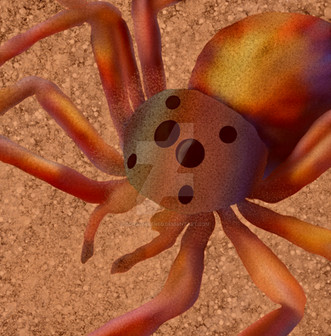HOME | DD
 DemonicManchot — Reinaut Formation: Scutorugops
DemonicManchot — Reinaut Formation: Scutorugops

#coelacanth #creaturedesign #fossil #paleontology #worldbuilding #sizechart #speculativeevolution #speculativebiology #speculative_evolution #speculativeevolutionart #flattacanth #anisospondyl #eryobis #reinautformation
Published: 2024-04-12 20:24:23 +0000 UTC; Views: 5732; Favourites: 70; Downloads: 3
Redirect to original
Description
The Reinaut Formation in the south of the continent called Guralta is one of, if not the most extensive fossil site from the late Bobossic. Dated to have been formed between 125 and 122 million Eryobian years ago, the Reinaut Formation offers a glimpse of what life was like in the Kikilian, the latest stage of the Bobossic right before the devastating mass extinction dubbed “The World Scarring” happened.Back when it was formed, the Reinaut Formation was likely a subtropical or temperate open woodland subject to seasonal rains. The fossils discovered in the Reinaut Formation so far, have mostly been megafaunal animals which tended to fossilise better than smaller animals in the conditions that were present in Reinaut 122 million years ago.
Besides Pachystreptoceros and Addacoceros, a third a Ceratanodirid was present in the Reinaut Formation: the heavyset Scutorugops inflexus. Unlike the Streptoceratines, Scutorugops was part of a lineage that specialised in brawling and intraspecific combat. While the horns of Streptoceratines grew spiralling upwards, the horn of S. Inflexus did not spiral and instead grew forwards and curved down. The horn featured deep ridges reminiscent of the horns of an ibex.
Curiously, Scutorugops was the most numerous Ceratanodirid in Reinaut. A great number of both males and females have been discovered here, which likely indicates herd behaviour. Further support for this idea comes from the fact that S. Inflexus showed quite some sexual dimorphism, contradictory to most Streptoceratines. Males were on average much larger than females and had much larger horns that became fused to the osteoderms of the rostrum and, in some cases, even grew down below the mouth. It is unknown if this hindered their feeding, but the heavy wear on many of the males’ their horns showed that they frequently butted heads and those downturned horns might’ve protected their jaws and kept their teeth from shattering.
Being such a massive and social beast, an adult Scutorugops likely wouldn’t have had much to fear from predators and their herds likely would’ve made any bystander move out of their way.
Related content
Comments: 5

👍: 0 ⏩: 1

👍: 0 ⏩: 1

👍: 0 ⏩: 0

👍: 0 ⏩: 1

👍: 0 ⏩: 0
























